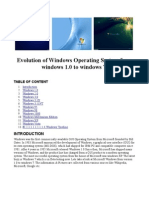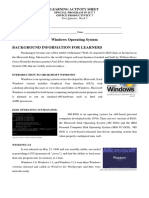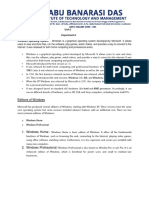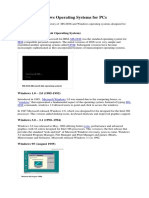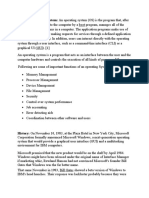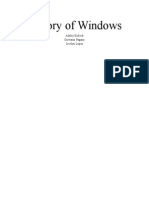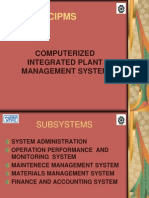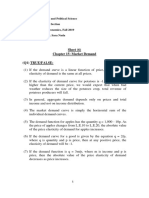0% found this document useful (0 votes)
46 views12 pagesComputer Course
The document provides an introduction to Microsoft Windows, detailing its history, development, and various versions from Windows 1.0 to Windows 10. It highlights key features of each version and lists applications available in the Windows store. Additionally, it emphasizes the importance of understanding Windows for general awareness and examination preparation.
Uploaded by
Preyansh RathaCopyright
© © All Rights Reserved
We take content rights seriously. If you suspect this is your content, claim it here.
Available Formats
Download as PPTX, PDF, TXT or read online on Scribd
0% found this document useful (0 votes)
46 views12 pagesComputer Course
The document provides an introduction to Microsoft Windows, detailing its history, development, and various versions from Windows 1.0 to Windows 10. It highlights key features of each version and lists applications available in the Windows store. Additionally, it emphasizes the importance of understanding Windows for general awareness and examination preparation.
Uploaded by
Preyansh RathaCopyright
© © All Rights Reserved
We take content rights seriously. If you suspect this is your content, claim it here.
Available Formats
Download as PPTX, PDF, TXT or read online on Scribd
/ 12














